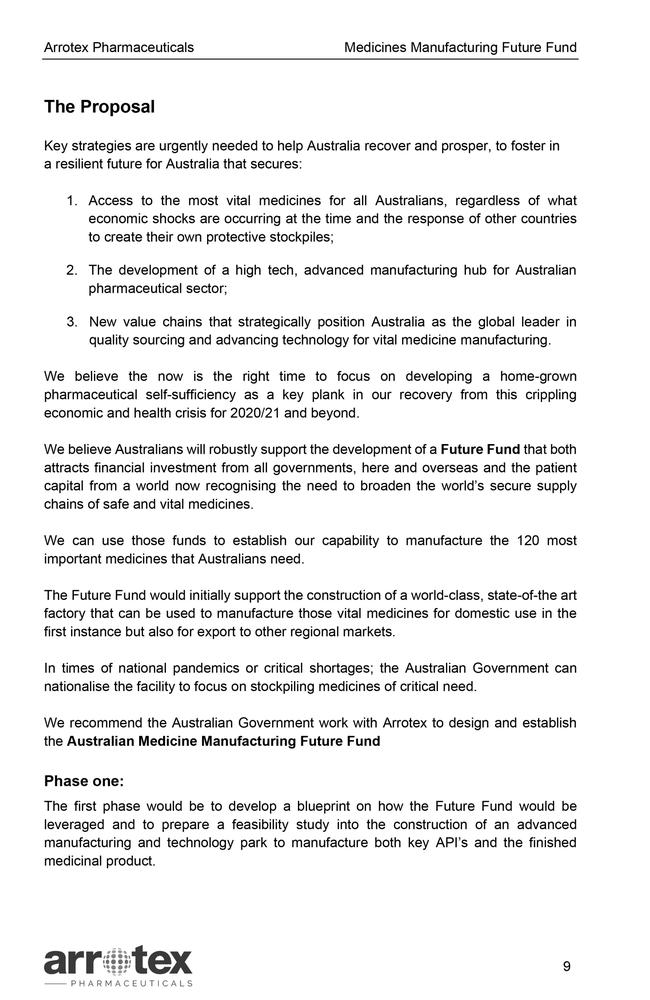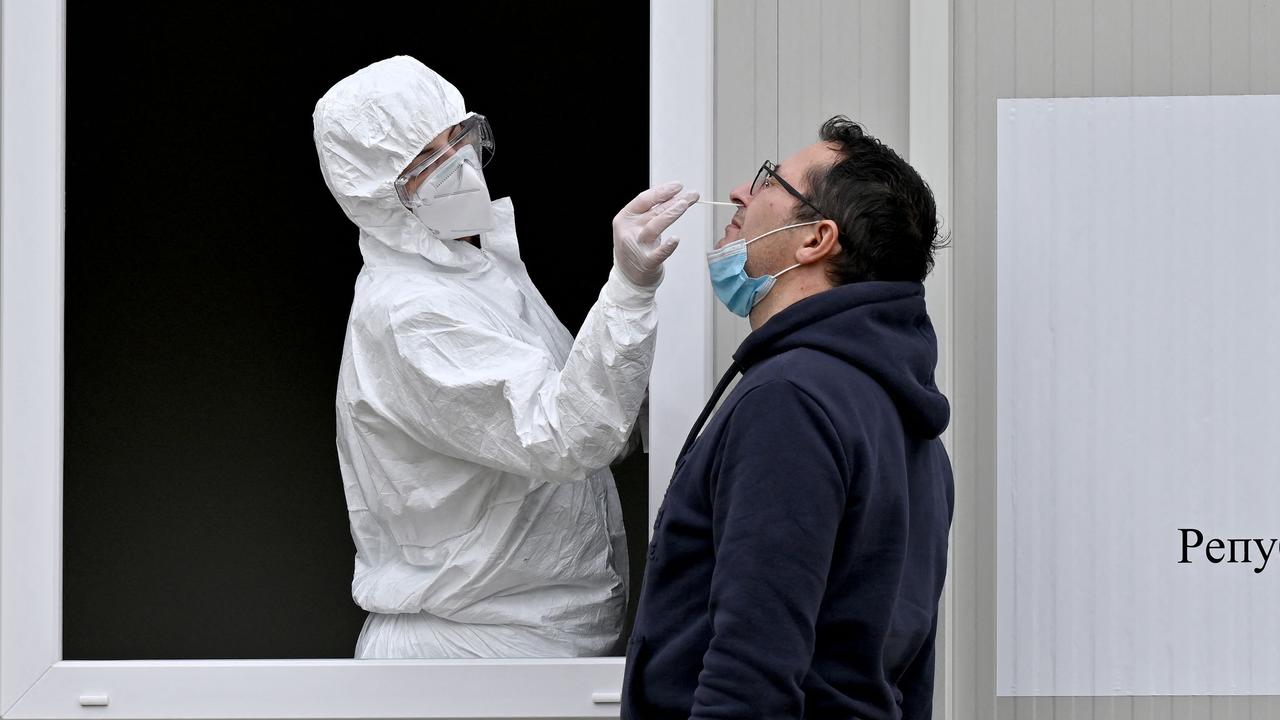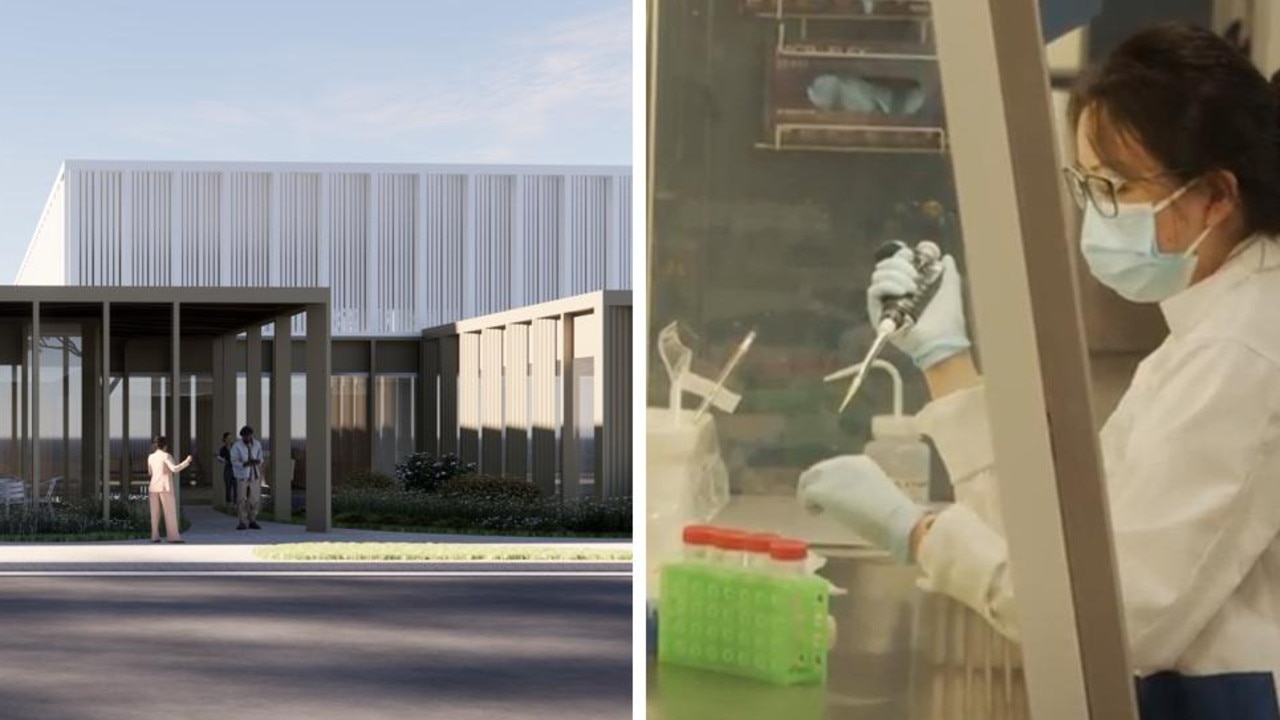Pharmaceutical giant’s plan to end Australia’s reliance on Indian and Chinese medicines after COVID-19
Australia’s dangerous dependence on India and China to make vital medicines for the sick has come to a head, and could end with plans to make more drugs here.
Coronavirus
Don't miss out on the headlines from Coronavirus. Followed categories will be added to My News.
Exclusive: Australians struggling to get prescriptions filled as drug supply from China and India is disrupted by COVID-19 could be helped by a plan to build a pharmaceutical manufacturing hub in Australia by 2022.
The plan before the government’s National COVID-19 Co-ordination Commission would end Australia’s reliance on India and China for our medicines, create jobs during the COVID-19 recovery and build a new export industry.
It could even see Australia exporting its high quality drugs to China where the emerging middle class is already paying inflated prices for Australian baby formula and vitamins.
Wealthy investors in the United Arab Emirates are already working on similar plans and want to work with Australia on the project.
Australia’s largest generic medicines supplier Arrotex has proposed a $1.5 billion Medicine Manufacturing Future Fund supported by the government, superannuation funds and the pharmaceutical industry.
By the end of 2022, the fund would build a state of the art manufacturing and technology park that could produce the 120 most vital medicines used by Australians and the ingredients needed for that manufacture.

Dennis Bastas chairman and CEO of Arrotex said the factories would be ready to make 120 key medicines during a pandemic or other crisis but during normal times, would make around 30 commonly used medicines to supply the Australian market and for export.
“Instead of the taxpayer supporting it we would manufacture 20-30 products here that we now source offshore to supply the Australian market,” he said.
“I’m not planning to own the factory just to assist in setting it up and add my IP and intellectual know how,” he said.
Arrotex supplies one in every four medicines supplied under the nation’s drug subsidy scheme and Mr Bastas owns the intellectual property and recipes for 150 of the most commonly used medicines in Australia.
He said he would be prepared to provide these recipes without charge during an emergency so medicines could be supplied to Australians.

MORE NEWS
Billion dollar plan to make more medicines in Australia
‘Move away’: Aussie expats warned as China orders arrests
Going back to Australian made to avoid ‘high reliance on China’
CSIRO uses Victorian tech in new face mask trial
Most medicines are now produced in India where labour is cheaper but new robotised and computer controlled manufacturing plants would make it commercially viable to produce some medicines in Australia.
Mr Bastas said Australia could work with other mid-sized nations like the UAE, which is considering setting up its own pharmaceutical manufacturing hub.
The UAE could produce around 30 of the most commonly used 120 medicines, Australia could produce another 30, he said.
COVID-19 has exposed Australia and the world’s dangerous reliance on India which produces 70 per cent of the most commonly used drugs and China which produces 80 per cent of the world’s raw pharmaceutical ingredients.
India banned the export of 26 key medicines early in the pandemic, factories in China ceased production and dozens of European countries banned the export of hundreds of medicines from their shores.
Spain, which makes medications needed to sedate people who need a ventilator to recover from COVID-19, has been unable to meet demand for the products.
News Corp revealed last week there are currently shortages of 600 medicines in this country including 75 which are in critical shortage and hospital pharmacists have raised alarm because they can’t get orders for medicines filled.
Most of the pharmaceutical manufacturing plants in Europe and India were 10-20 years old and often production had to be stopped because of problems.
Originally published as Pharmaceutical giant’s plan to end Australia’s reliance on Indian and Chinese medicines after COVID-19


